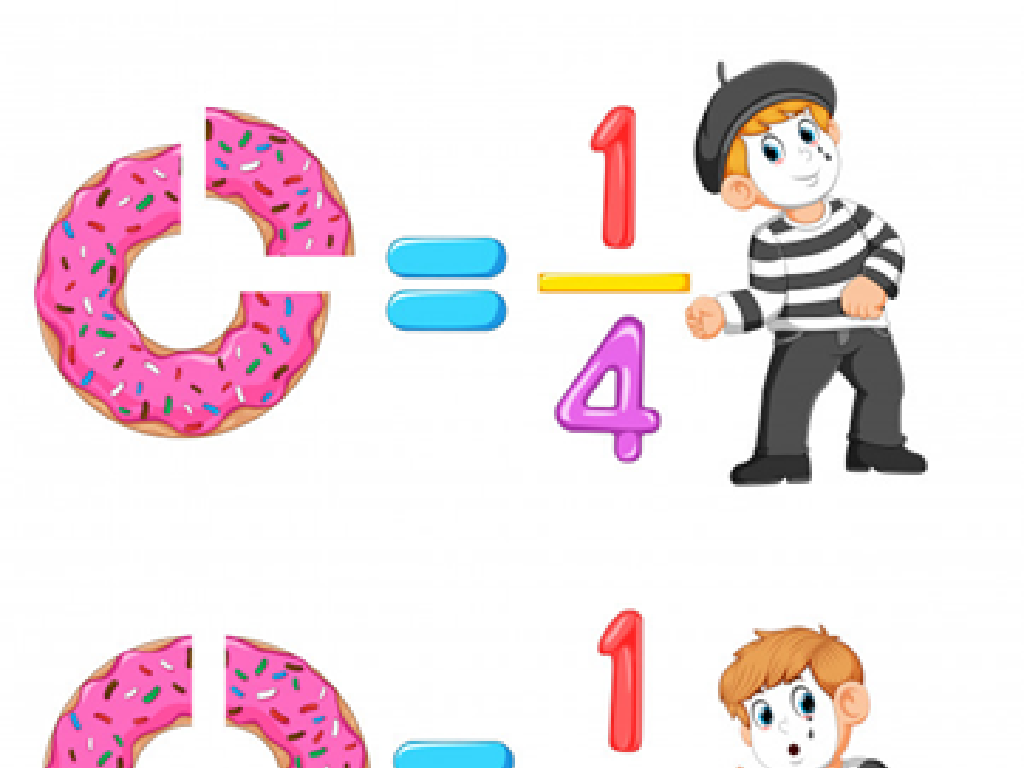Formatting Street Addresses
Subject: Language arts
Grade: Third grade
Topic: Formatting
Please LOG IN to download the presentation. Access is available to registered users only.
View More Content
Learning About Formatting
– What is ‘formatting’?
– Arranging content in a specific way
– The importance of formatting
– Helps us read and understand information easily
– Today’s lesson: Street Addresses
– We’ll learn how to write addresses neatly and clearly
– How to format addresses correctly
|
Begin the lesson by explaining the concept of formatting as organizing content in a structured and consistent manner. Emphasize that good formatting helps us to read and understand information quickly and easily. Introduce the day’s focus on formatting street addresses, explaining that this skill is important for sending letters, filling out forms, and ensuring deliveries reach the right place. Teach the students the standard format for writing addresses, which includes the recipient’s name, street number, street name, city, state, and ZIP code. Use examples to illustrate and practice writing addresses in the correct format.
What is a Street Address?
– Street address definition
– Where you live, like a house number and street
– Parts of a street address
– Number, street, city, state, ZIP code
– Examples of addresses
– 123 Oak St, Springfield, IL, 62704
|
Begin the lesson by explaining that a street address is a specific way to tell where someone lives or where a place is located. It’s like a set of special clues that takes you to a doorstep. Break down the parts of a street address: the street number (like the number on a racing car), the street name (like the name of a friend), the city (the community where you live), the state (one of the 50 in the USA), and the ZIP code (a special number for your area). Show examples of full addresses, and perhaps use a familiar location, like the school’s address, as an example. This will help students understand how each part is used and why it’s important. Encourage students to memorize their own address as homework.
The Importance of Formatting Addresses
– Ensures correct mail delivery
– Aids in readability and understanding
– Crucial for emergency services
– Quick location finding can save lives
– Practice formatting our addresses
– Let’s write our home addresses neatly!
|
This slide aims to explain to third-grade students why it is important to format street addresses correctly. Emphasize that proper formatting helps mail carriers deliver mail and packages to the right place without confusion. Highlight that clear addresses are easier for everyone to read and understand, which is especially important in a community. Stress the critical role of address formatting in helping emergency services, such as firefighters and paramedics, quickly locate homes or buildings during emergencies. To reinforce the lesson, engage the students in an activity where they practice writing their own home addresses in the correct format, ensuring they understand the practical application of what they’ve learned.
How to Format Street Addresses
– Write the recipient’s name first
– Add street number and name next
– City, state, and ZIP code last
– Use correct capitalization and punctuation
– Example: Mr. John Doe, 123 Apple St., New York, NY, 12345
|
This slide introduces students to the proper format for writing street addresses. Emphasize the importance of placing each piece of information on separate lines and in the correct order. The first line is for the recipient’s full name, the second line for the street number and street name, and the third line for the city, state abbreviation, and ZIP code. Stress the use of proper capitalization for names and places, as well as the use of commas to separate city and state. Provide examples on the board and have students practice by writing an address for a fictional character or a real location. This will help them understand how to address envelopes for mail correctly.
Formatting Street Addresses
– Let’s format an address together!
– Example: 123 Apple St., New York, NY, 10001
– House number, street name, city, state, ZIP code
– Discuss each part of the address
– Street number: 123, Street: Apple St., City: New York, State: NY, ZIP: 10001
– Why proper formatting matters
– Helps mail reach the right place and teaches us attention to detail
|
This slide is designed to engage third-grade students in understanding how to properly format a street address. Start by presenting the example address and then break it down, explaining each component: the street number, street name, city, state, and ZIP code. Emphasize the importance of writing addresses correctly to ensure mail delivery to the intended recipient. Discussing the meaning of each part helps students recognize the structure and purpose of an address. Highlight the value of attention to detail in formatting, which is a skill that applies to many areas of learning and everyday life. Encourage students to practice with their own or fictional addresses.
Activity Time: Writing Our Addresses!
– Write your address neatly
– Swap envelopes with a friend
– Can your friend read it?
– Discuss what makes it readable
– Clear handwriting, correct format
|
This activity is designed to help students practice writing their street addresses in the correct format. It’s important for them to understand the components of an address, including the street number, street name, city, state, and zip code. Have the students write their address on an envelope, focusing on neat handwriting and proper placement. After exchanging envelopes with a classmate, they should determine if their classmate can read the address with ease. This will teach them the importance of clear communication through writing. For the teacher: Prepare a discussion on what makes an address readable, such as legible handwriting, correct spelling, and proper address format. Provide examples of poorly written addresses to illustrate common mistakes. Have a few different activities ready for students who finish early, such as drawing their house or writing a letter to a fictional character with a properly formatted address.
Class Activity: Address Scavenger Hunt
– Find 3 addresses near school
– Write addresses on paper
– Format addresses correctly
– Include street, city, state, ZIP
– Share and explain in class
– Discuss street name, number, city, ZIP
|
This activity is designed to help students understand the structure and importance of properly formatting street addresses. Instruct students to safely find three different addresses in the vicinity of the school. They should write each address on a separate piece of paper, ensuring they include the street number, street name, city, state, and ZIP code in the correct order. Back in the classroom, each student will share their addresses and explain the parts. For the teacher: Prepare a worksheet with address templates for guidance, discuss safety while outside, and consider pairing students. Possible variations of the activity could include finding addresses in different neighborhoods, looking for addresses in a book or online with supervision, or creating a fictional address for a story character.
Wrapping Up: Formatting Street Addresses
– Why address formatting matters
– Reviewing address components
– House number, street name, city, state, ZIP
– Let’s recap our address parts
– Practice with an example: 123 Main St, Springfield, IL 62704
– Time for questions and answers!
|
As we conclude, remind students that properly formatting addresses is crucial for ensuring mail reaches the correct destination. Review the parts of an address: the house number, street name, city, state, and ZIP code. Use an example to help them visualize and remember the format. Encourage students to ask questions about anything they’re unsure of regarding address formatting. Prepare to answer common questions and perhaps have a few practice addresses ready for students to format as a review activity.






